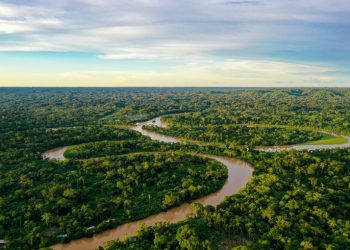Jakarta, Indonesia Sentinel — NASA astronauts Butch Wilmore and Sunita Williams have captured global attention following the revelation of their dramatic ordeal in space. Stranded in a remote location beyond Earth’s orbit, the astronauts pair has had to rely on ingenuity and limited resources for survival, including to eat soup from their own urine water.
Initially planned as an eight-day mission in June, their journey took an unexpected turn when the Boeing Starliner spacecraft, intended to bring them home, experienced a helium leak and thruster failure. Declared unsafe for their return, Wilmore and Williams were left aboard the International Space Station (ISS), awaiting rescue by a SpaceX Dragon spacecraft scheduled for February 2025.
The prolonged stay has tested the astronauts’ endurance and the station’s resource management. NASA has reassured the public that the ISS is equipped with sufficient supplies to sustain the crew, including food, water, oxygen, and essential items.
Limited Resource
The ISS stocks approximately 1.7 kilograms (3.7 pounds) of food per astronaut per day, supplemented by additional rations for unforeseen mission extensions. These meals are tailored to meet each astronaut’s daily nutritional needs, typically arriving frozen or pre-packaged, and reheated using onboard food warmers.
While the astronauts initially enjoyed fresh fruit, roasted chicken, and pizza, their menu has now been pared down to powdered milk, dehydrated casseroles, and freeze-dried soups—reconstituted using water processed from their own sweat and urine.
The ISS features an advanced filtration system that ingeniously converts astronauts’ waste into drinking water, minimizing waste and maximizing resource utilization. However, the dramatic dietary adjustments have sparked concerns about their long-term health and well-being.
Sleep Tourism: A Growing Trend for Rest and Rejuvenation
Doctors assigned from NASA closely monitor astronauts conditions, ensuring they meet their daily needs, yet both astronauts appear visibly thinner. Addressing their appearance, Williams dismissed diet concerns, attributing the weight loss to microgravity.
With their rescue still months away, Wilmore and Williams face another three months of space soup and microgravity exercises. The SpaceX Dragon spacecraft is slated to bring them home in February 2025.
Despite NASA’s assurances of their well-being, the stranded astronauts survival on recycled urine and limited rations underscores the formidable challenges of extended space missions. Their resilience serves as a testament to human endurance—even when dinner comes with an unconventional twist.
(Raidi/Agung)

























